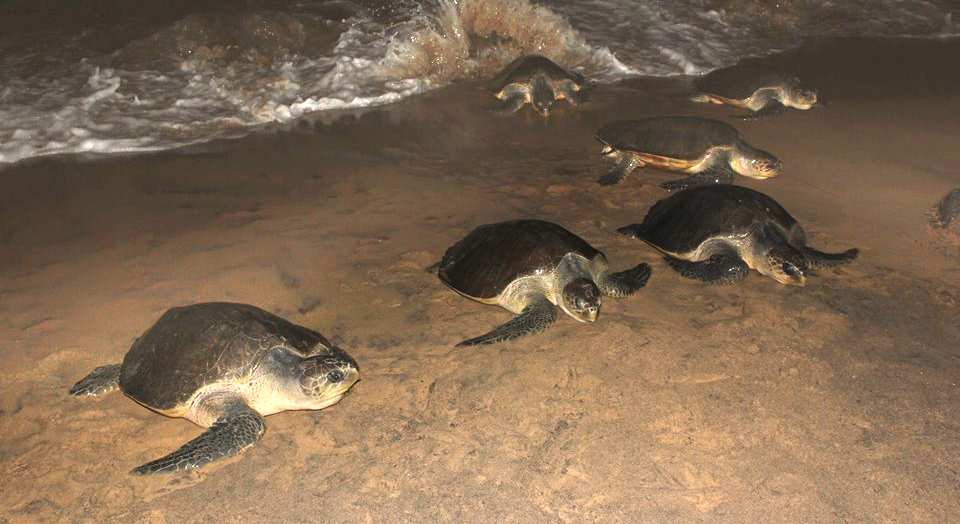Kendrapara: The Gahirmatha Marine Sanctuary personnel have started preparations for providing a tranquil atmosphere for the endangered Olive Ridleys for their smooth sojourn to the sandy beaches to lay eggs. Gahirmatha Marine Sanctuary is considered to be the largest rookery for the endangered Olive Ridley sea turtle, which is protected under Schedule 1 of the Wildlife Protection Act, 1972, and accorded the highest protection like endangered tigers. Sanctuary Ranger Pradosh Kumar Moharana said lakhs of Olive Ridley turtles were seen congregating at a kilometre distance from the sea coast near Habalikhati and Satabhaya.
Anticipating the mass nesting of the Olive Ridleys in March, the Forest personnel have expedited the sea patrolling and launched cleaning of the beaches at regular intervals, Moharana said. The Forest personnel are very optimistic that the mass nesting phenomenon of the endangered marine turtle will occur after the second week of March. “We expect that the turtles would come en-masse to lay eggs at the golden beach of Nasi-2 island. The mass nesting phenomenon usually occurs during ‘Dola Purnima’,” the Ranger said adding, “We are hopeful that this time too the mass nesting of Olive Ridleys might occur after March second week.”
Meanwhile, the Forest personnel have come across nests of Olive Ridley turtles at the beaches of Gahirmatha Marine Sanctuary. As many as 829 eggs of Olive Ridleys were collected from the sporadic nesting sites on the beach by the personnel for artificial hatching at the hatchery set up at Babubali, Moharana said.
However, the sea along with beach conditions at Nasi-2 is yet to turn conducive for mass nesting of the Olive Ridleys. The beach has been eroded earlier at Nasi-2, the favourite nesting place of the endangered Olive Ridley turtles and the beach formation is yet to occur in some parts of Nasi-2. However, the Forest personnel are hopeful that when the Northern wind blows the eroded stretches will be filled with sand automatically facilitating an atmosphere conducive to mass nesting
